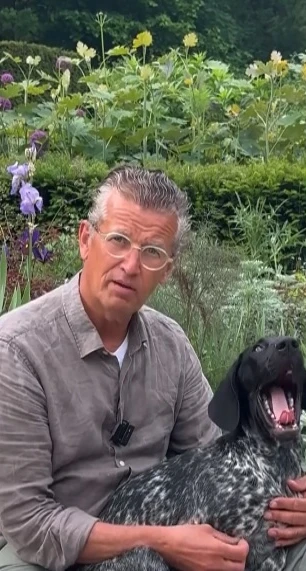
I'm sitting in front of a garden I created three years ago. Gravel, sand, a bit of compost. No drip irrigation, no lawn, no automatic watering. And yet: everything lives. More than that – it thrives.
Lychnis, Stachys, Artemisia, Euphorbia, Yuccas, Iris: grey-leaved, sun-loving plants from Mediterranean, steppe-like or rocky regions. Species that have learned to get by with little. And that's exactly their strength.
That sounds like a Mediterranean summer, but it's now reality in northern Germany too. Climate extremes are becoming the new norm. The gardens we design must respond to this. Not someday, but now.
Beth Chatto knew this back in the 1980s. Her Gravel Garden in Essex, England, was born out of necessity – inhospitable land, dry soil, far from any water connection. I visited her long ago and had many fascinating conversations with her. Instead of fighting, she observed. And then she planted – without watering, without fertilizer, without compromise. A garden that set new standards.
The grey leaves are no coincidence. These plants protect themselves from evaporation through fine hairs – a natural sun protection, perfected over millennia.
Stachys byzantina – the silvery "lamb's ear" with its velvety texture. Artemisia with its bitter fragrance. Euphorbia characias ssp. wulfenii, which loves semi-desert conditions, and like Iris germanica, forms deep roots in bone-dry soil and still blooms as if it had been through a spa program.
They all stand here – healthy, vital, without artificial irrigation. And they show how simple it can be when you listen to nature.
"The right plants for the right places" – this maxim is far more than just a garden motto. Site-appropriate planting means: no battles against nature, but cooperation with the conditions.
A Gravel Garden is not a garden of deprivation. Beauty doesn't emerge despite drought – it emerges through it. No water means: different plants, different colors, different rhythms. More structure, more texture, more serenity.
In times of water scarcity and ecological responsibility, the Gravel Garden is a model for the future. And it works – in Hamburg as well as in Essex or Mallorca.
Gardens that sustain themselves. Plants that know how to survive. Design that speaks with the soil, not against it.